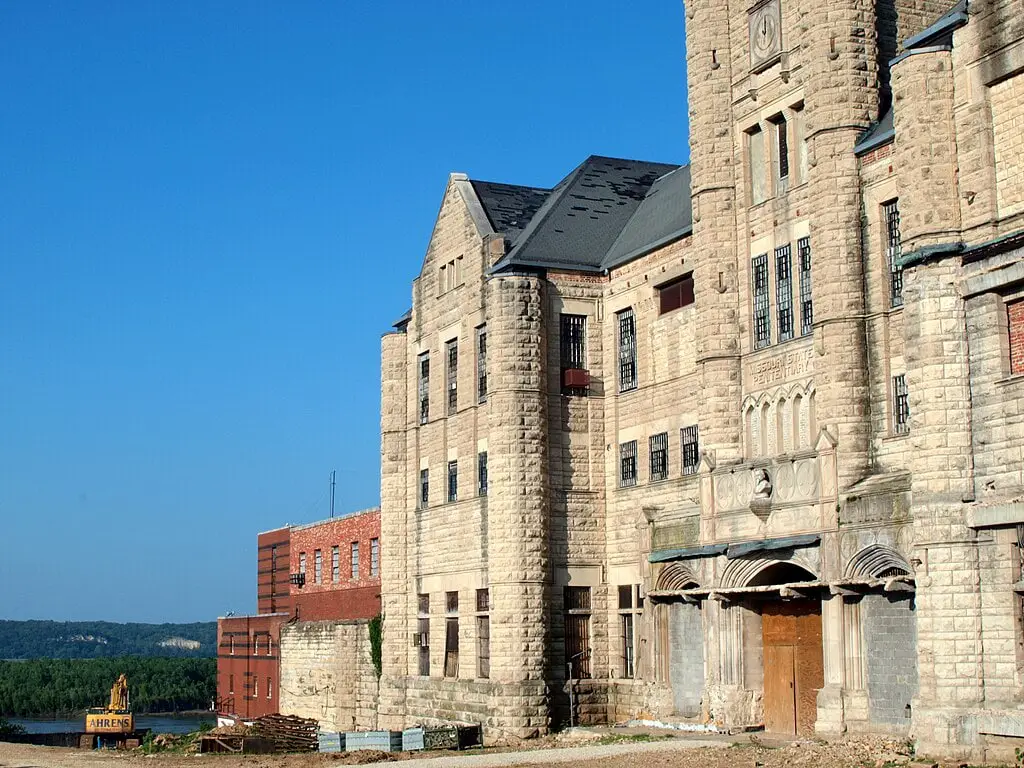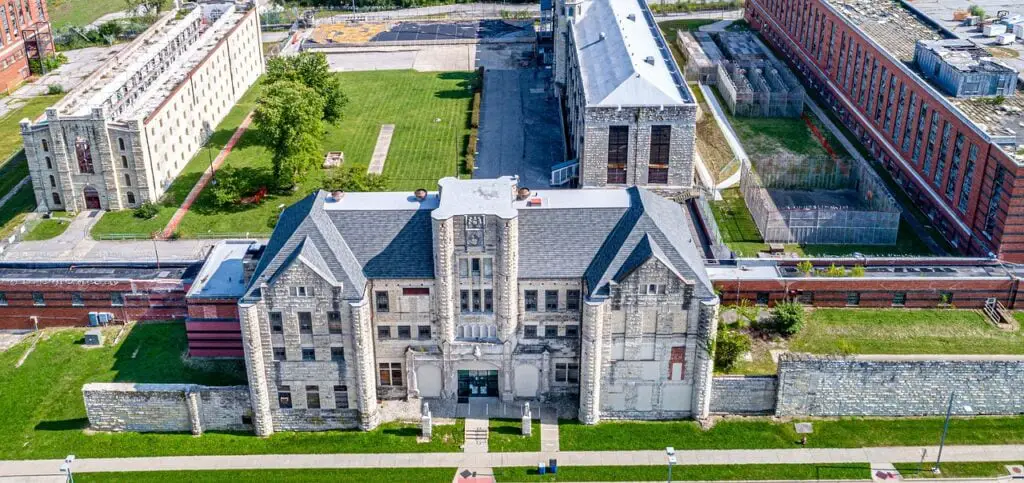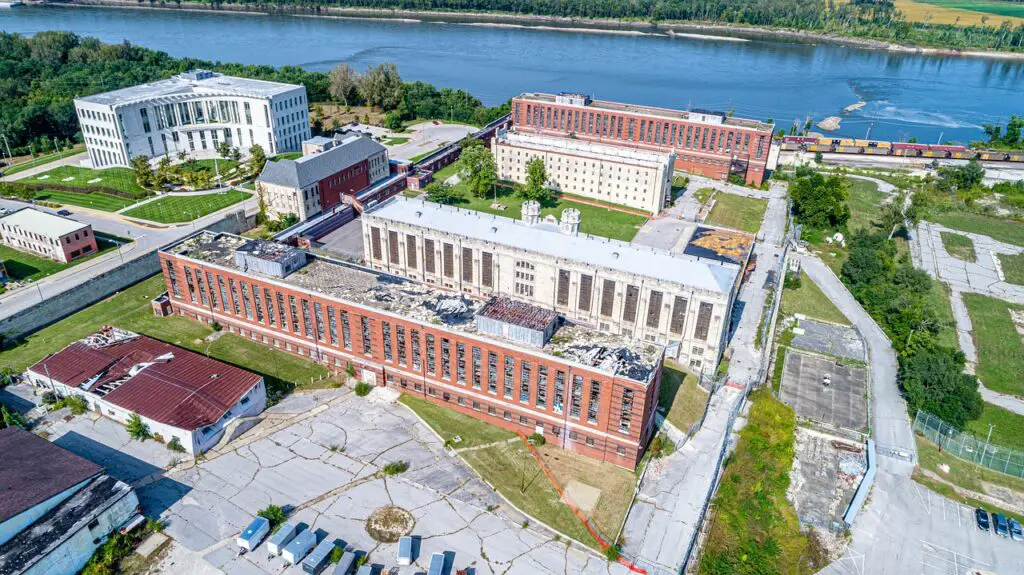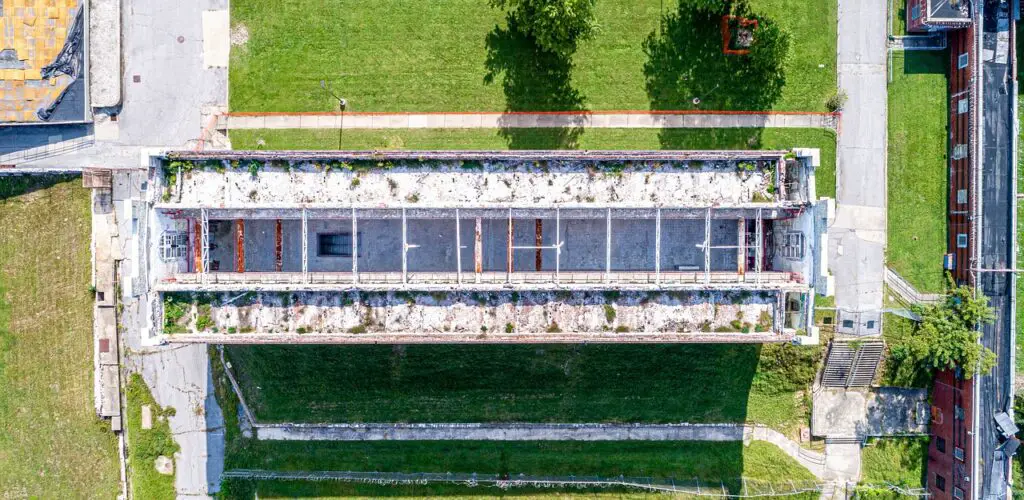The Remarkable Journey of Missouri State Penitentiary: A Story of Time and Transformation
Once upon a time, nestled in the heart of Jefferson City, Missouri, stood a facility renowned for its extensive history – the Missouri State Penitentiary.
Opening its doors in 1836, this prison is one of the oldest correctional facilities west of the Mississippi River.
Its walls, towering and stern, have witnessed the ebb and flow of time, standing as a testament to the evolving landscape of the American penal system.
A simplicity of purpose marked the prison’s early years: to house those who had veered off the path of the law. However, as the years progressed, so did the complexity of its operations.
Including a hospital’s industrial, academic, and vocational programs marked a significant shift in the prison’s role, transforming it from a mere holding facility to a place of reform and rehabilitation.
But this transformation wasn’t just about brick and mortar. The prison’s story is also about the people who walked its halls – the guards, wardens, and inmates.
Each brought their own story and piece of history, contributing to the rich tapestry that makes the Missouri State Penitentiary not just a landmark but a living, breathing chronicle of change.
Its doors are now open to the curious and the history enthusiasts, offering a glimpse into a past that once was.
Things to do in Jefferson City, Missouri, now include exploring this historic site, where the echoes of the past still resonate within its walls.
The Missouri State Penitentiary’s journey from a functional prison to a historical site reflects a broader narrative of growth and adaptation.
It’s a story that continues to unfold, inviting all who wish to learn and experience a piece of Missouri’s rich history.
Unveiling the Roots: The Dawn of Missouri State Penitentiary
In the 1830s, a new chapter in Missouri’s history began with the design and construction of the Missouri State Penitentiary.
Conceived by the architect John Haviland, the penitentiary symbolized order and discipline for the newly admitted state of Missouri.
Situated in Jefferson City, which had been declared the state capital just a decade earlier, the prison was more than a facility; it was a statement of authority and stability in a growing state.
The penitentiary officially opened its doors in 1836, a landmark year that also saw significant events like the fall of the Alamo.
It began modestly, with a few inmates, who were immediately put to work making bricks. This symbolized the era’s reliance on manual labor and the belief in the rehabilitative power of creation.
Among these first inmates, the majority were from St. Louis, serving time for larceny, except for one, who was incarcerated for a violent altercation.
As the 1840s rolled in, the prison expanded its population to include female inmates, reflecting a broader societal shift in understanding crime and punishment.
The penitentiary’s early history is a mosaic of stories, from its inmates to the bricks they laid.
Each element of this period laid the foundation for what the Missouri State Penitentiary would become – a complex institution with a story intertwined with the state’s narrative.
Evolution of the Missouri State Penitentiary: Building a Legacy
The late 19th century brought significant architectural and operational changes to the Missouri State Penitentiary.
A pivotal moment occurred in 1868 with the completion of Housing Unit A, also known as A-Hall.
This structure, primarily built by the inmates using stone quarried on site, is a remarkable embodiment of the prison’s evolving landscape.
Warden Horace Swift, who served as the architect, ensured that A-Hall functioned as a secure facility and symbolized the penitentiary’s enduring presence.
As the 20th century dawned, the penitentiary grew in size and reputation. Its efficiency was widely recognized, yet it was infamous for housing some of the nation’s most notorious inmates.
This period saw the arrival of shady figures, each with their dark tales, further cementing the jail’s place in the annals of American criminal history.
The 1954 riot, a tumultuous event involving inmates’ rebellion against the authorities, marked a significant moment in the prison’s narrative.
The riot resulted in extensive damage and called for the intervention of the Missouri State Highway Patrol, the Missouri National Guard, and several police departments.
This incident highlighted the challenges of managing such a complex institution and catalyzed future reforms.
Infamous Residents of the Missouri State Penitentiary
The Missouri State Penitentiary’s history is deeply entwined with the stories of its inmates, some of whom have etched their names into the darker pages of American history.
Among these were individuals like Robert Berdella, a notorious serial killer and torturer who was incarcerated in 1988 and met his demise within the prison walls.
His presence in the penitentiary added a chilling chapter to its history.
The prison also housed Charles Arthur “Pretty Boy” Floyd, synonymous with early 20th-century American crime.
His incarceration in 1925 for robbery and subsequent demise in a police shootout in 1934 added to the prison’s reputation for housing high-profile criminals.
The penitentiary’s walls have echoed with the footsteps of such infamous figures, each carrying their grim tale.
Perhaps one of the most intriguing inmates was James Earl Ray, the man convicted for the assassination of Martin Luther King Jr.
His escape in 1967, hidden inside a bread box, is a story often recounted in the annals of the prison’s history, demonstrating the ingenuity and desperation of those confined within its walls.
A New Era and the Final Curtain for Missouri State Penitentiary
The 1970s marked a new era of modernization for the Missouri State Penitentiary.
In 1974, a groundbreaking event occurred as Lillian Bonds broke barriers by becoming the inaugural female correctional officer in a male prison.
This change signified a progressive shift in the penitentiary’s operations, reflecting broader societal changes in gender roles and equality.
During this period, the penitentiary also witnessed a transition in its methods of capital punishment. Between 1938 and 1965, the gas chamber at the prison was the site of execution for thirty-nine inmates.
However, the last execution at the prison in 1989 marked the switch to lethal injection, a method perceived as more humane.
This shift in execution methods was indicative of evolving attitudes towards capital punishment.
The Missouri State Penitentiary closed its doors on October 14, 2004, concluding its 168-year history of incarceration.
The new Jefferson City Correctional Center’s replacement signified a move towards more modern correctional facilities.
The closure of the old prison was not just the end of an era but also the beginning of a new chapter as a site of historical significance and learning.
The Penitentiary Today: From Prison Walls to Tourist Halls
Today, the Missouri State Penitentiary is not a place of confinement but a beacon of history and education.
After its closure in 2004, it began a new journey, opening its doors to the public for tours in 2009.
This transformation has allowed visitors to explore the rich and complex history of the facility, turning former cells and halls into corridors of learning and reflection.
One of the key attractions of the penitentiary is the historic Housing Unit Four, which dates back to 1868.
Despite the challenges, including a devastating tornado in 2019, this unit has been restored and reopened for tours, allowing visitors to step back and experience a piece of post-Civil War history.
The resilience of this structure mirrors the enduring legacy of the prison itself.
The Missouri State Penitentiary’s transition to a historic site has preserved its history and contributed to the local economy and cultural landscape of Jefferson City.
It is a poignant reminder of the past, inviting thousands of visitors each year to explore its depths and learn from its stories.

Exploring the Historic Missouri State Penitentiary: A Chapter on Tours and Experiences
The Missouri State Penitentiary in Jefferson City, MO, now serves as a captivating historical landmark, offering a variety of tours that cater to different interests.
These tours give visitors unique experiences and insights into the prison’s penitentiary’s storied past.
History and Heritage Tours:
The history tours at the penitentiary immerse visitors in the prison’s past, featuring stories about dangerous inmates and significant events that influenced the U.S. prison system.
A highlight of these tours is the opportunity to hear from a former inmate, offering a rare, personal perspective of life within the penitentiary walls.
Ghost and Paranormal Tours:
For those interested in the eerie and supernatural, the penitentiary offers ghost and paranormal tours.
These tours promise a blend of fright and fun, exploring ghostly stories and paranormal activities within the prison’s halls.
Various options, including ghost tours and more immersive paranormal investigations, cater to different levels of ghost-hunting enthusiasts.
Photography Tours:
Photography enthusiasts can indulge in specialized photography tours. These tours allow visitors to capture the prison’s unique architectural and historical essence.
Options range from public group tours to private experiences, providing opportunities for both amateur and experienced photographers to find that perfect shot.
Each tour type at the Missouri State Penitentiary offers a distinct way to experience and understand this historic site’s rich history and intriguing stories.
Whether exploring the depths of the penitentiary’s past, delving into its ghostly tales, or capturing its essence through a camera lens, the tours provide an engaging and memorable experience for all visitors.
The Missouri State Penitentiary tours bring history to life and preserve the legacy of this significant landmark in Jefferson City, MO.
They offer a unique blend of education, exploration, and entertainment, making the prison a must-visit destination for anyone interested in history, the paranormal, or photography.
Reflecting on the Legacy of Missouri State Penitentiary
As we look back on the storied past of the Missouri State Penitentiary, it’s clear that its walls hold more than just the echoes of its former inmates; they encapsulate a significant chapter in Missouri’s, and indeed America’s, history.
The penitentiary’s journey from a correctional facility to a historical landmark exemplifies the evolution of societal attitudes toward justice and rehabilitation.
Today, it stands as a monument to change, resilience, and learning, offering invaluable insights into the complexities of our past.
The Missouri State Penitentiary’s story is not just one of confinement but of transformation, reflecting a path from darkness into a source of enlightenment and understanding.




